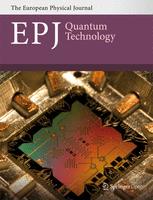Aug 3 2015
Precise targeting biological molecules, such as cancer cells, for treatment is a challenge, due to their sheer size. Now ,Taiwanese scientists have proposed an advanced solution, based on a novel combination of previously used techniques, which can potentially be applied to thermal cancer therapy.

Pei-Chang Tsai from the Institute of Atomic and Molecular Sciences, at the Academia Sinica, Taipei, and colleagues just published in EPJ QT an improved sensing technique for nanometre-scale heating and temperature sensing. Using a chemical method to attach gold nanorods to the surface of a diamond nanocrystal, the authors have invented a new biocompatible nanodevice. It is capable of delivering extremely localised heating from a near-infrared laser aimed at the gold nanorods, while accurately sensing temperature with the nanocrystals.
The authors' lab specialises in fabricating bright fluorescent diamond nanocrystals. The paticularity of these nanocrystals is that they contain a high concentration of punctual colour centre defects. When exposed to green light, these centres emit a red fluorescent light, useful for sub-cellular imaging applications. Unlike ordinary fluorescent material, these centres can also be turned into hypersensitive nanoprobes to detect temperature and magnetic field, via optical manipulation and detection.
By introducing gold nanoparticles to the nanocrystal, the authors make it possible to convert the incoming laser light into extremely localised heat. These gold nanoparticles can therefore act as switchable nanoheaters for therapies based on delivering intense and precise heat to cancerous cells, using a laser as the energy source. The novelty of this study is that it shows that it is possible to use diamond nanocrystals as hypersensitive temperature sensors with a high spatial resolution - ranging from 10 to 100 nanometers - to monitor the amount of heat delivered to cancer cells.